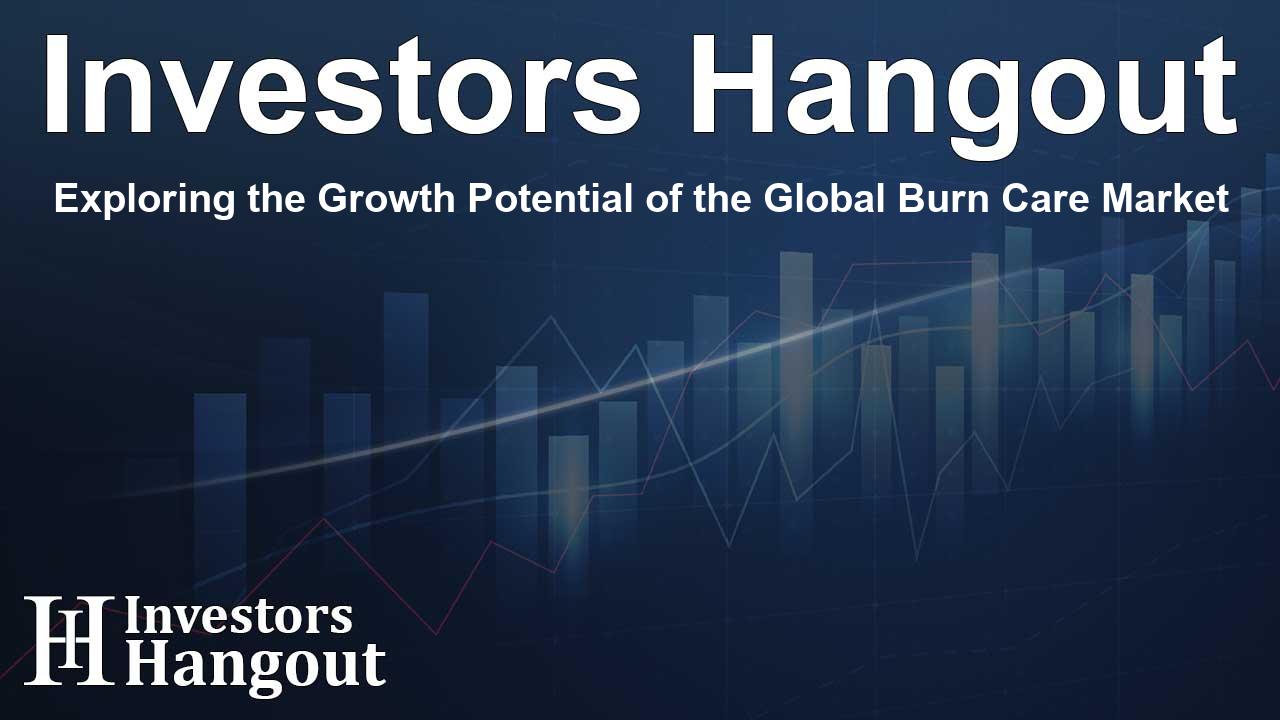Exploring the Growth Potential of the Global Burn Care Market

Growth of the Global Burn Care Market
The global burn care market is set for significant growth over the coming years. Currently valued at approximately US$2.46 billion, it is projected to expand at a compound annual growth rate (CAGR) of 5.6%. By 2030, the market is anticipated to reach around US$3.35 billion. This surge is primarily fueled by the increasing number of burn injuries attributed to workplace accidents, domestic incidents, and other hazardous situations.
Factors Driving Market Growth
One of the critical drivers for this burgeoning market is the advancement in burn treatment technologies. As the healthcare landscape evolves, there is a growing emphasis on innovative solutions that enhance patient outcomes. Alongside advancements in treatments, there is also a heightened awareness and education surrounding proper burn care practices. These elements are complemented by supportive government initiatives that encourage better healthcare standards and accessibility.
Impact of the Aging Population
The demand for efficient burn treatments continues to escalate, particularly as our global population ages. Older adults are more susceptible to complications from slow-healing wounds and burns. This demographic shift drives the urgent need for advanced burn care products that cater to various burn degrees and healing needs. Technologically advanced products, including specialized dressings and biologics, are becoming increasingly essential in managing these challenges.
Innovative Treatment Solutions
The treatment ecosystem for burns is diversifying, featuring a range of innovative products designed to optimize care. Enhanced burn dressings, biologics, and superior wound assessment devices spotlight the ongoing innovation within the industry. These products not only improve treatment efficiencies but also promise better recovery experiences for patients facing severe burns.
Market Segmentation Insights
The burn care market is categorized into several key segments based on product type. These segments include advanced burn dressings, burn wound therapy devices, biologics, and traditional burn care products. Among these, the biologics segment is particularly noteworthy, expected to grow at the highest CAGR during the forecasting period due to the escalating demand for targeted healing options for complex burns. The integration of regenerative medicine practices is also fostering this segment's growth and acceptance among healthcare professionals.
Breakdown by Burn Degree
The categorization of burns by degree further delineates market dynamics. The market is divided into first-degree, second-degree, and third-degree burns, with second-degree burns holding the largest market share at present. This is largely due to their prevalence, necessitating advanced burn care interventions as they impact both the epidermis and dermis layers of the skin.
Geographical Market Insights
Geographical analysis reveals that North America currently commands the largest share of the burn care market. The U.S. and Canada possess robust healthcare infrastructures that support the distribution of advanced burn care solutions. Furthermore, both nations report high incidences of burn injuries, which bolsters market growth. The availability of major players in this region and an ongoing commitment to research and development initiatives reinforce North America's dominant position.
Key Players in the Burn Care Market
The landscape of the burn care market features several established names, including Smith+Nephew, Mölnlycke Health Care AB, Cardinal Health Inc., Integra LifeSciences, and ConvaTec. These companies leverage their extensive distribution networks and product innovations to enhance their market presence. Smith+Nephew, for example, is recognized for its innovative wound care solutions, while Mölnlycke Health Care AB pursues strategic partnerships to broaden its reach and maintain a competitive edge.
Conclusion
The burn care market is on a trajectory of growth driven by technological advancements and increasing awareness of burn treatment effectiveness. As new products come to market, they promise to enhance patient care significantly. The emphasis on biologics and innovative solutions will likely shape the forefront of burn treatment in the coming years, making the landscape for healthcare professionals increasingly promising.
Frequently Asked Questions
What is the projected value of the burn care market by 2030?
The burn care market is projected to reach approximately US$3.35 billion by 2030.
What factors are driving the growth of the burn care market?
Key growth factors include advancements in treatment solutions, increasing awareness, and supportive government initiatives.
Which segment is expected to grow the fastest in the burn care market?
The biologics segment is anticipated to register the highest CAGR during the forecast period due to its effectiveness in treating severe burns.
How is the burn care market segmented?
The market is segmented by product type, degree of burns, and geographical region.
Who are the major players in the burn care market?
Major players include Smith+Nephew, Mölnlycke Health Care AB, Cardinal Health Inc., and Integra LifeSciences, among others.
About The Author
Contact Dominic Sanders privately here. Or send an email with ATTN: Dominic Sanders as the subject to contact@investorshangout.com.
About Investors Hangout
Investors Hangout is a leading online stock forum for financial discussion and learning, offering a wide range of free tools and resources. It draws in traders of all levels, who exchange market knowledge, investigate trading tactics, and keep an eye on industry developments in real time. Featuring financial articles, stock message boards, quotes, charts, company profiles, and live news updates. Through cooperative learning and a wealth of informational resources, it helps users from novices creating their first portfolios to experts honing their techniques. Join Investors Hangout today: https://investorshangout.com/
The content of this article is based on factual, publicly available information and does not represent legal, financial, or investment advice. Investors Hangout does not offer financial advice, and the author is not a licensed financial advisor. Consult a qualified advisor before making any financial or investment decisions based on this article. This article should not be considered advice to purchase, sell, or hold any securities or other investments. If any of the material provided here is inaccurate, please contact us for corrections.
